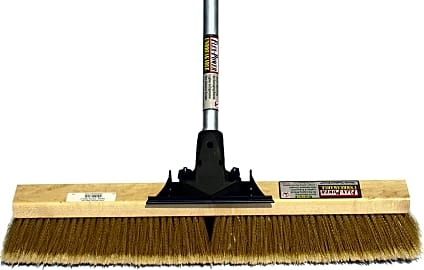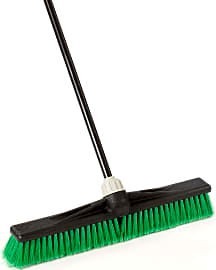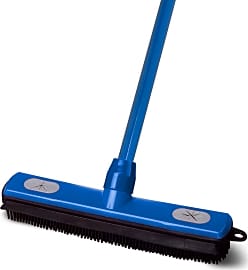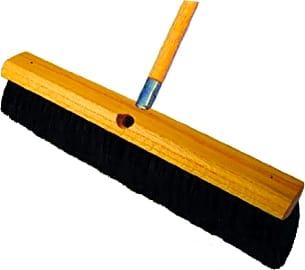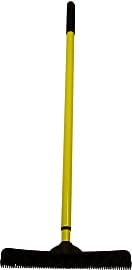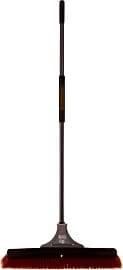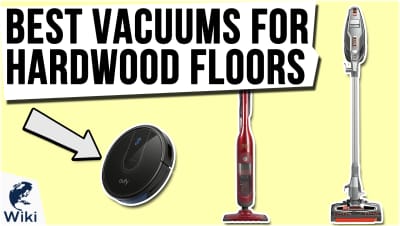The 10 Best Push Brooms

This wiki has been updated 41 times since it was first published in April of 2016. This may not be the most glamorous category, but it is a necessary one. When it comes to handling a big mess, a good push broom can get the job done fast. We've included options suitable for a variety of flooring materials, from wood to tile to carpet and slate. With both indoor and outdoor models available, they'll make cleanup up of just about anything a breeze, including pet hair and leaves. When users buy our independently chosen editorial selections, we may earn commissions to help fund the Wiki.
Editor's Notes
March 21, 2019:
When it comes to push brooms, the key words are sturdiness and usability, so we looked for those that tick both of these boxes. We still think that the Super Sweep Gray Flagged, FlexSweep FlexPower Commercial, and Libman Commercial 850 Smooth Surface are all fine choices. Each offers a head that's adequately reinforced as well as a handle that shouldn't fail you, making all of these excellent for a range of needs. The Super Sweep is the lightest of the three, so choose it you find that you become fatigued easily. We also decided to keep the Evriholder FURemover, although it does have one potential problem: the handle can crack if the broom is wielded just a bit too zealously. Nevertheless, its rubber construction is a huge boon for some pet owners, so it's still an option to consider. Finally, even though we liked its construction, we removed the Rubbermaid Rough-Surface due to issues with availability.
A Brief History Of Brooms
This device, the foot treadle broom machine, made them faster than he could, and made them better to boot.
Without brooms, we wouldn't have a convenient way to pick up dirt, witches would have to walk around on foot, and there'd be no way to taunt sports teams for losing four games in a row.
But have you ever stopped to wonder where brooms come from? And if you have, have you ever considered picking up some sort of hobby?
Brooms were originally made for cleaning castles. These early models were handmade, and fashioned out of sticks with straw or hay tied to them. These brooms fell apart easily and didn't work very well, but other than that, they were fantastic.
Living spaces were much dirtier back then than they are today (hopefully, anyway). Most cooking was done over open fires, which meant lots of dirt and ash. These brooms, sorry as they might have been, were the only means of keeping the home clean.
Then, something amazing happened: a breakthrough in sweeping technology. In 1797, a Massachusetts farmer named Levi Dickenson made a broom for his wife out of sorghum tassels. This new broom was vastly superior to its predecessors. Word of his new invention spread rapidly, and he had trouble keeping up with demand.
This prompted him to devote his time to inventing a machine to make brooms for him. This device, the foot treadle broom machine, made them faster than he could, and made them better to boot. The machine was essentially a set of vices and clamps, along with a tension device to keep the sorghum taut as the manufacturer wrapped it around the handle.
Shakers in the northeastern United States took these new brooms and improved upon them by flattening the corn and securing it with wire. This was a much better design, as it allowed for superior control and gave the ability to cover more ground.
The ability to make more brooms in such a short amount of time made them more widely available, and it became expected that a household would be swept clean at regular intervals.
Synthetic bristles hit the scene in the 1940s, and these were both longer-lasting and better able to pick up debris. Brooms were soon found in just about every home, office, and school, and they quickly became available in a variety of sizes, shapes, and textures.
So, the next time you need to sweep the floor, think about how far brooms have come before you start to complain about having to do yet another chore.
The Proper Way To Sweep
One cruel truth you learn about the world as you get older is that everyone — man and woman, young and old — will judge you solely on your sweeping ability.
OK, that may not be true, but people will judge you if they come to your house and see dust bunnies all over the place. Unfortunately, sweeping is one of those skills that no one ever really teaches you — they just assume it's self-explanatory.
Well, that all changes now.
If you try to do all in a single push, you'll just leave a trail of debris behind, and your friends and family will all turn their backs on you.
The most important factor is, of course, your broom. Make sure the bristles are clean, well-maintained, and all facing the same direction (it's the same system you use for combing your hair).
Once you've got the proper equipment, it's time to get started. Have a plan of attack before you get to work; ideally, you'll sweep towards a set location, like the door. Don't wander all over the place, or dirt will get misplaced, and you might have to go over the same spots multiple times.
Don't be a hero, either. Use small strokes, and form multiple piles. Sweep these up into a dustpan as you go. If you try to do all in a single push, you'll just leave a trail of debris behind, and your friends and family will all turn their backs on you.
Why You Still Need A Push Broom
Given that it's the 21st century, you may feel a little ridiculous still using centuries-old technology. Haven't we found a better way by now? What about the vacuum cleaner?
For starters, push brooms are fantastic for keeping outside spaces like decks and patios clean. You could try to tidy up outside with a vacuum, but the neighbors will probably look at you funny.
Given that it's the 21st century, you may feel a little ridiculous still using centuries-old technology.
In fact, some floors are just better suited for brooms. Vacuums do a better job on hardwood and tile than they ever have before, but they still struggle to match what a good broom can do.
Plus, it's a hassle to get out the vacuum. You have to take it out of the closet, lug it around, plug it in, and constantly stop to empty the bin or switch outlets. You could probably sweep the whole house in the time it takes to get the vacuum up and running.
If you like to clean at night, turning the vacuum on is a surefire way to make your entire family hate you. They likely won't hear the broom, though, unless you're sweeping really hard. As an added bonus, the broom is much less likely to terrify your dogs (although they may have fun chasing it around).
It's also considerably cheaper, and not just in terms of initial investment. Vacuums have lots of moving parts, and those can break down fairly easily. When they do, they're often not cheap to replace. Even if they never have any problems, though, bags and filters can be expensive, plus you have to pay for the electricity to run the things.
Brooms, on the other hand, are cheap. If something breaks, they can be cheaply replaced. Also, they rarely become obsolete.



